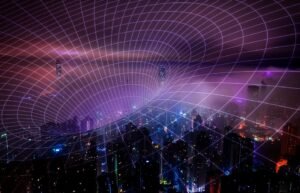At a U.N. technology agency summit in Switzerland this week, dozens of robots, including many humanoid ones, will demonstrate their ability to assist in achieving increasingly unlikely global goals.
The U.N.’s 17 Sustainable Development Goals (SDGs), set in 2015, aim to enhance human life and the world by 2030 but are now considered unlikely.
‘Nadine,’ a social robot that simulates emotions and remembers individuals, is one of the International Telecommunication Union (ITU) event’s robot stars.
Friday’s first human-robot press conference will conclude the two-day program.
“The idea is to showcase their capabilities, opportunities and challenges to start a global dialogue on robotics for good,” said Frederic Werner, Head of Strategic Engagement at the ITU Telecommunication Standardization Bureau, ahead of the Geneva ‘ A.I. for Good event, which could draw 5,000 people.
He noted that robots might take off in five years like generative artificial intelligence (A.I.) powering bots like OpenAI’s ChatGPT did this year.
“You have the inflection point where material science, battery life, network connectivity, A.I. and machine learning, all these things will converge to make robotics more accessible than they are now,” he said.
The World Food Programme’s HungerMap initiative uses A.I. to identify areas headed toward hunger. It is also developing remote-controlled emergency aid trucks.
The WHO is developing a benchmarking mechanism to verify A.I. illness diagnosis.
“The SDGs, let’s say regrettably, are failing, and I believe that A.I. can help rescue them before it’s too late,” said ITU Secretary-General Doreen Bogdan-Martin before the July 6-7 session.
The ITU includes universities and firms, including Huawei Technologies [RIC:RIC: HWT. U.L.] and Google (GOOGL.O). It sets A.I. standards and allocates worldwide radio spectrum and satellite orbits.






































Comment Template